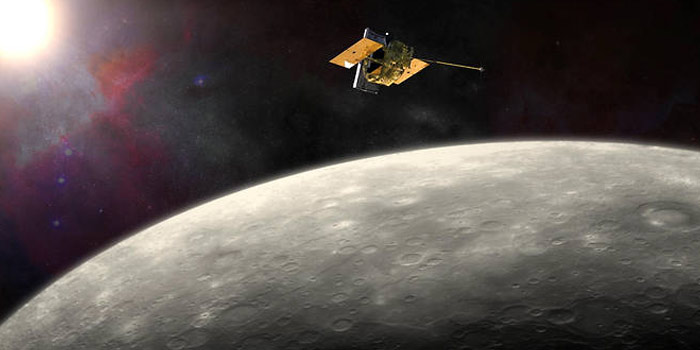At the end of this month, NASA’s MESSENGER spacecraft will collide with Mercury since the spacecraft will completely run out of the helium propellant that keeps it from succumbing to the Sun’s gravitational pull. On April 24, the mission’s operators at the Johns Hopkins University Applied Physics Laboratory (APL) will carry out the last maneuver to help the probe stay in orbit, after which it will run out of fuel.
NASA’s MESSENGER (MErcury Surface, Space ENvironment, GEochemistry, and Ranging) was blasted into space in 2004. After a journey of 6.5 years it finally entered Mercury’s orbit in 2011. After nearly 4 years of data collection, the probe will crash into the planet’s surface at a speed greater than 3.91km/sec. However, the collision will not be viewable by NASA’s engineers as it will take place on the side facing away from Earth.

Image Credit: NASA/JHU APL/Carnegie Institution of Washington
Based on the data sent by the MESSENGER probe, two space theories were confirmed. One was that the Mercury contained water in the form of ice and the second was that asteroids from outside our solar system delivered organic material to Earth and other inner planets when they crashed into them. The existence of water was ascertained by the evidence which showed the presence of around 177sqkm wide and about 3.2km thick polar ice caps on the planet.
The polar ice caps were also found to be covered with a dark layer of supposedly organic material. The polar regions even had craters which were likely to have been created by impacts from asteroids and comets. Scientists could therefore confirm that carbon-based substances and water were delivered to the Milky Way’s inner planets including Earth and Mars through volatile-rich meteorites and water-laden asteroids, creating conditions for life on Earth.
Also see: NASA Curiosity Rover research claims Mars may have liquid water
The project also lead to the development of highly heat-resistant, reflective ceramic cloth sunshade that protected the orbiter’s instruments from the Sun’s radiation, something which was crucial as the planet is uncomfortably close to the Sun. Sean Solomon, Principal Investigator of the mission, said that the MESSENGER’s fatal crash into Mercury may not be in vain as the impact crater it will create will be useful for future scientific study.
